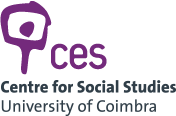Digital Alberti - Tradition and innovation in the architectural theory and practice in Portugal
This research project is a celebration and an innovation. A celebration in the sense of commemorating the order given by King John III, in mid XVI century, to André de Resende to translate Alberti’s De re aedificatoria to the Portuguese language. An innovation in the sense of producing, for the first time, an intelligent computational environment to understand the cultural impact of this treatise on classical architecture in Portugal and abroad. Unfortunately the manuscript translation made by Resende was lost but the influence of Alberti’s architecture in the counter reform in Portugal was acknowledged due to the spread of Renaissance culture outside Italy. This had a profound impact not just in the mainland but also overseas, namely in Brazil and India, at the time under Portuguese administration. As the Portuguese edition of the treatise, made by M. Kruger and A. E. Santo, is, for the first time available and translated into Portuguese from Latin (1), and is going to be published by Calouste Gulbenkian Foundation in 2009, the time is ripe to understand the full implications of Alberti’s theory in Portuguese classical architecture. This project aims to trace that influence using, on the one hand, a computational environment to construct a generative shape grammar, not only to decode the treatise, that was originally published in 1485 without illustrations, but also to grasp its influence on Portuguese architecture using the apparatus given by the construction of a shape grammar which will enable to understand the transformations between the treatise and the buildings designed and built in Portugal and overseas. This project has, therefore, the following stages in order to accomplish these aims: Decoding the treatise; Tracing the influence of the treatise on Portuguese architecture; Tracing the impacts of the treatise on the theory, practice, and teaching of architecture; Mounting the exhibition. As final products an itinerant exhibition will be mounted, an educational software will be available and a book will be published, recording the findings so far developed and found, in order to grasp the full implications of the Italian renaissance theoretical constructs on the practice of classical architecture in Portugal, namely in counter reform period (XVI-XVII centuries).(1)Translated from the facsimile made by Lücke , 1975, as well as from the critical edition made by Orlandi, 1996.
Organization of exhibition, final conference; publication of book
Bruno Figueiredo
Eduardo Castro e Costa
Giovana de Godoi
Gonçalo Canto Moniz
Hélder Silvestre
Joaquim Pires Jorge
José Pinto Duarte
Luís Ferreira
Maria Albuquerque Gomes
Mário Krüger (coord)
Nelson Mota
Pedro Coutinho
Vitor Murtinho

